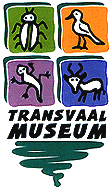
![]() COLLECTING INSECTS
COLLECTING INSECTS
Collecting Equipment
Trapping Equipment
Collecting Techniques
![]() PRESERVING INSECTS
PRESERVING INSECTS
Equipment
Preservation
![]() Becoming a serious collector
Becoming a serious collector
click
![]() Job opportunities
Job opportunities
click
![]() Acknowledgements
Acknowledgements
click
![]() References
References
click
![]() APPENDIX
APPENDIX
click
Trapping insects consists of two procedures: attracting the insect by some means and, having attracted it, preventing its escape. The most obvious attractant for night-flying insects is light. Portable low-voltage fluorescent lamps that operate from a car battery are now available. The bulbs emit light on wavelengths different from those of ordinary incandescent bulbs and tend to be more attractive to insects.
The trap consists of a light source, with a funnel at the bottom down which the insects fall, after striking the lamp, into a killing jar or dark box from which they cannot escape (Fig. 9).2.1.2 Sheet trapThis trap consists of a light source and a big white sheet. the sheet is hung between two trees, with the light placed in front of it (Fig. 10). Insects attracted to the lamp will settle on the sheet while others will settle nearby. Make sure the sheet is also spread on the ground to catch insects that fall. Collect the insects from the sheet with an aspirator, a vial or a small net. In the field a small generator might be needed for the light.
Meat trap
Meat is a good attractant for some flies and beetles. The trap consists of a small bucket filled three-quarters with water and a detergent. The detergent helps to break the surface tension of the water, and prevents the insects from escaping. A smaller paper cup is used for the meat bait. Place the cup with meat bait in the water, with stone or something heavy inside to prevent it from falling over in the water. The bucket is lowered into a hole in the ground, and placed level with the surface. To protect the trap from small mammals, place a rock on top of a flat piece of metal, at an angle, so that insects can get in (Fig. 11). They will be attracted to the smell of the rotting meat, fall into the soapy water and drown.
Sugar trap
The same method can be used for a trap using sugar instead of meat, but the bucket should be hung from a tree (Figure 11). Mix banana, sugar water, brewers yeast and an alcohol like beer as bait. Various orders of insects will be attracted to the sweet, rotting smell. The traps can be checked regularly, but should be left for at least two days to mature before they are replaced.
For trapping ground-dwelling insects, a jam jar can be sunk into the ground with its opening level with the surface (Figure 12). Many insects, especially beetles, fall into this and cannot escape due to the smoothness of the side walls of jar. Some preservative may be placed in the jar. A few traps depend on colour to attract insects. A shallow yellow or white tray, about 3 cm deep and as large as possible, may be filled with water and a detergent. Place this in the open (Figure 13). Insects, especially aphids and other small flying species, will be attracted to the colour and fall into the water.